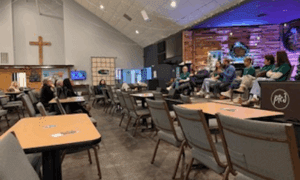The technological advances in spinal surgery over the last decade have been dramatic. Many of the instrumentation systems and techniques that are used by spine surgeons today were not even developed during my Fellowship training 14 years ago. Fortunately, our ability to learn and perfect these techniques has also improved with the availability of cadaver-based training facilities and surgeon mentoring programs. Surgeons that have the desire to remain on the cutting edge of these technological advancements have a myriad of resources available to assist them in becoming proficient in performing new and often more complex procedures. I was very fortunate to have been trained by a surgeon who foresaw the need to remain current with the many advancements in the treatment of spinal disorders that we have seen in the last decade. Dr. Alan Goodrich was Chief Of Spine Surgery at the Medical College Of Georgia during my residency training. He always stressed to all his resident trainees the need to remain current with all available knowledge and techniques that can improve patient care and outcomes in the treatment of disorders of the spine. Dr. Goodrich is now in private practice in Augusta, Georgia, and continues to remain on the cutting edge in spine technology. He is nationally known for his work on the evolving lateral interbody fusion technique, or XLIF procedure. My patients and I have benefited greatly from his continued generosity in sharing his knowledge and experience with me.
Many of the improvements in spinal surgery have centered around the development of minimally invasive surgical techniques (MIS). MIS surgery utilizes smaller incisions and specially developed retractors and instruments. Procedures that 10 years ago required long hospital stays and months of painful recovery, with large incisions, now require one or two days in the hospital, with recovery in only weeks. Scars resulting from an MIS procedure are small, and postoperative pain has been drastically reduced when compared to more traditional “open” procedures. Not all patients are candidates for MIS surgery. Each case needs to be evaluated by a surgeon with experience in these often complex techniques. Extreme lateral interbody fusion (XLIF) and minimally-invasive transforaminal interbody fusion (MISTLIF) are two such procedures that I have utilized extensively in my practice in recent years.
XLIF has become a common technique to help patients with spinal deformity or severe degenerative lumbar conditions that have failed all types of conservative treatment. It involves a lateral approach through the patient’s side. A small skin incision can be used because of the advancements in retractor systems with high-powered fiberoptic light sources. The procedure cannot be utilized in all cases, but XLIF is performed in about one to two hours and is associated with low blood loss and quick recoveries when compared to traditional open posterior fusion. About two-thirds of the lumbar disk can be removed through the patient’s side, and a plastic spacer is placed in-between the vertebra to facilitate correction of deformity and fusion. Posterior fusion with placement of rods and screws can also be performed using MIS techniques. The newest rod and pedicle screw systems are now able to be placed through small percutaneous incisions utilizing similar retractors and lighting systems used in XLIF.
All surgery has potential risks. Conservative measures such as physical therapy, nonsteroidal medicines, activity modification, injections and appropriate chiropractic care should all be exhausted prior to surgery even being considered in all but the most serious spinal conditions. MIS surgery does have some disadvantages when compared to open procedures, and is not appropriate in all circumstances. Potential disadvantages include increased operative time and steep learning curves for surgeons. Less visualization during surgery and higher radiation exposure for surgeon and patient are also disadvantages. The advantages, as previously mentioned, include:
1. Small incisions with less postoperative pain.
2. Less blood loss.
3. Shorter hospital stays.
4. Quicker return to daily activities.
Patients considering a minimally invasive spinal procedure should consult with their surgeon and discuss all potential risks, goals of the proposed procedure, chance of success and expected recovery course. All appropriate nonoperative treatment options should be exhausted. While all patients are not candidates for MIS surgery, continued technological advancements are making these procedures much more likely to be an option in the future treatment of common spinal problems in the future.
Chad M. Kessler, M.D.
Georgia Bone and Joint is located at 1755 Highway 34 East, Suite 2200, Newnan, Georgia 30265. Phone 770-502-2175
They are also located at 101 Yorktown Drive, Suite 211, Fayetteville, Georgia 30214. Phone 770-460-4303












Leave a Comment
You must be logged in to post a comment.